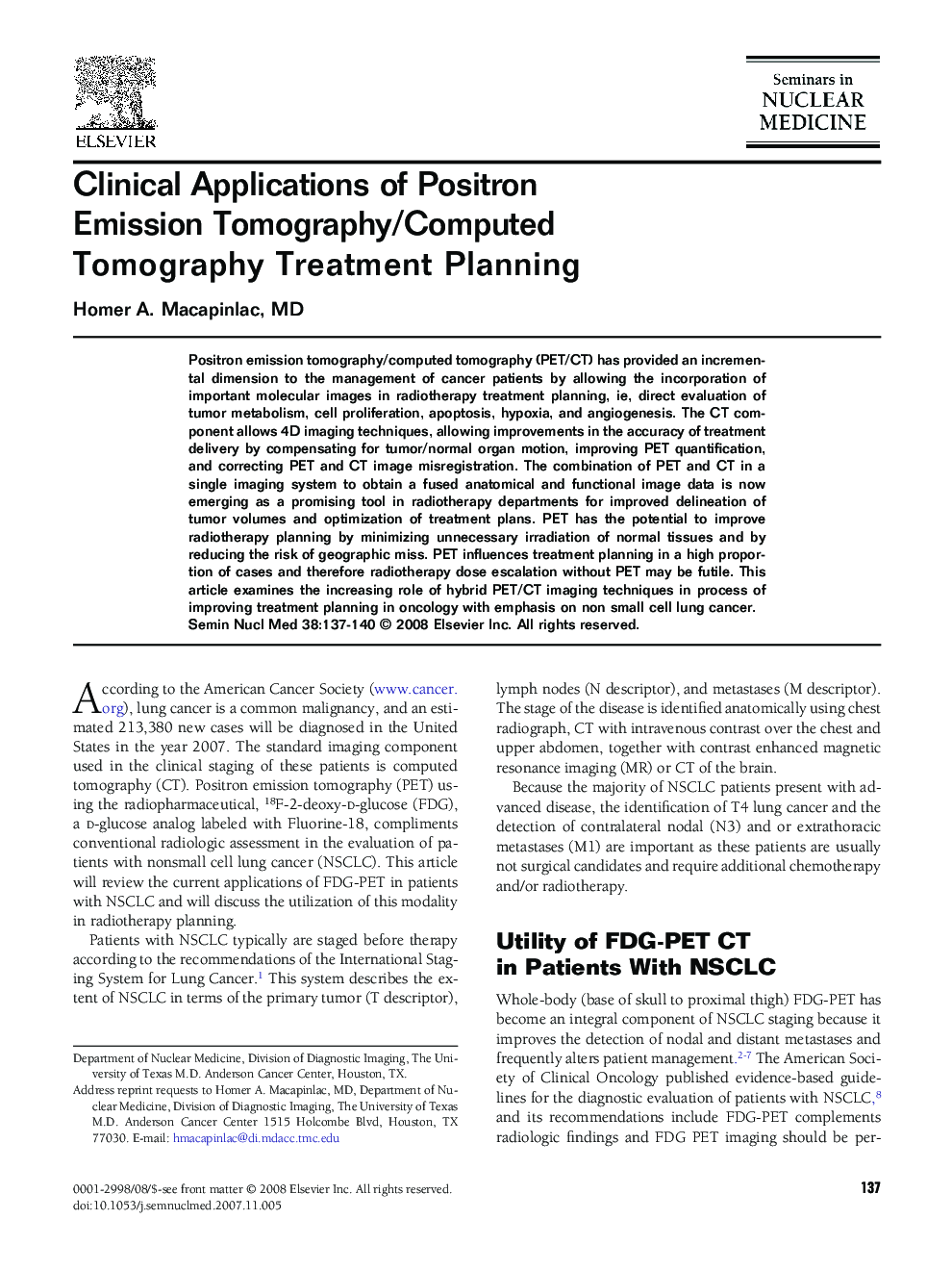| Article ID | Journal | Published Year | Pages | File Type |
|---|---|---|---|---|
| 4251153 | Seminars in Nuclear Medicine | 2008 | 4 Pages |
Positron emission tomography/computed tomography (PET/CT) has provided an incremental dimension to the management of cancer patients by allowing the incorporation of important molecular images in radiotherapy treatment planning, ie, direct evaluation of tumor metabolism, cell proliferation, apoptosis, hypoxia, and angiogenesis. The CT component allows 4D imaging techniques, allowing improvements in the accuracy of treatment delivery by compensating for tumor/normal organ motion, improving PET quantification, and correcting PET and CT image misregistration. The combination of PET and CT in a single imaging system to obtain a fused anatomical and functional image data is now emerging as a promising tool in radiotherapy departments for improved delineation of tumor volumes and optimization of treatment plans. PET has the potential to improve radiotherapy planning by minimizing unnecessary irradiation of normal tissues and by reducing the risk of geographic miss. PET influences treatment planning in a high proportion of cases and therefore radiotherapy dose escalation without PET may be futile. This article examines the increasing role of hybrid PET/CT imaging techniques in process of improving treatment planning in oncology with emphasis on non small cell lung cancer.
